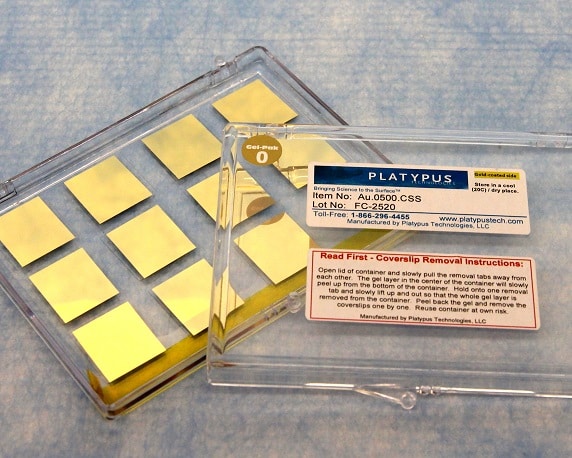Exploring Different Types of Coated Coverslips
Coated coverslips are crucial in achieving accurate and high-quality imaging results in microscopy and nanotechnology. These coverslips have various types of coatings applied to their surfaces to offer enhanced properties that improve cell adhesion, spreading, and imaging capabilities. Understanding the different types of coated coverslips and their applications is essential for scientists and researchers seeking to optimize their microscopy experiments. This blog post will explore the various types of coated coverslips and highlight their applications.
Types of Coated Coverslips
Many types of coatings can be applied to coverslips to enhance scientific experiments and technology uses, but in this post, we will cover four key options.
Glass Coverslips
Glass is an ideal material for a coverslip because it does not depolarize or scatter light, nor are they impacted by autofluorescence, unlike plastic coverslip solutions. Glass coverslips can be manufactured in various ways depending on the required properties, with some options including borosilicate and siliconized glass.
Gold Coated Coverslips
Gold-coated coverslips are commonly used in nanotechnology, biotechnology, and atomic force microscopy (AFM) applications. A thin layer of gold is deposited onto the coverslip to enhance optical properties like selective reflectivity and transmissivity significantly. Gold-coated coverslips provide topographical uniformity, making them ideal for high-resolution imaging techniques that demand precise topographic information.

Poly-L-Lysine Coated Coverslips
Positively charged, poly-L-lysine coated coverslips significantly enhance the adhesive properties of the substrate surface. These coverslips are commonly employed in cell culture and immunofluorescence staining experiments, where improved cell attachment is crucial for obtaining reliable results. However, their positive charge can cause non-specific binding, leading to background noise in imaging experiments. Researchers must carefully consider the experimental conditions and cell types before choosing these coverslips.
Applications of Coated Coverslips
Coverslips are widely used across various scientific fields, with the following being five common applications:
Cell Culture
In cell culture, coverslips are a platform for growing and studying cells. They provide a sterile and stable surface for cells to adhere to, facilitating their growth and observation under a microscope. Coverslips also help protect the cells from external contaminants, ensuring a controlled and safe environment for cell culture experiments.
Microscopy
Coverslips are essential in microscopy. They act as transparent shields that protect delicate samples while allowing light to pass through. They ensure the preservation and clarity of microscopic specimens, enabling detailed observation and analysis.
Mirrors
Coverslips are also utilized in optics, particularly in the construction of mirrors for efficient reflection and total internal reflection systems in optical instruments. In this context, coverslips function as a protective layer that enhances the optical performance of the mirrors.
Scanning Probe Microscopy
Coverslips find their application in scanning probe microscopy to improve the quality and accuracy of surface analysis. Specifically, ultra-flat template-stripped gold chips mounted on coverslips provide a solution to minimize surface roughness.
Sensors & Microarrays
Coverslips are utilized to enhance the performance and functionality of various devices. Specifically, chromium-free gold films are commonly applied to coverslips to preserve surface reactivity. These films are particularly beneficial when creating self-assembled monolayers for sensor development and attaching bioactive probe molecules.
Platypus Technologies and Coated Coverslips
Platypus Technologies are experts in surface science, focusing on cell culture, biological sensors, nanotechnology, and more. We provide a selection of high-quality gold and metal coatings and coverslips suitable for a range of applications, including those mentioned above.
Our range of gold thin films includes the following:
- Gold-coated microscope slides
- Gold-coated coverslips
- Gold-coated glass chips
- Gold-coated chips for surface plasmon resonance (SPR)
- Gold-coated glass plates
We offer standard and custom products as we can coat glass with most metals (Ag, Ni, Ti, etc.) and cut to any size >5 mm. Ready to make a purchase? Contact a member of Platypus today, and we’ll be happy to help.